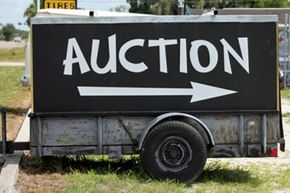Running a non-profit organization is often an appealing alternative to anyone who feels corporate America has worn out its welcome. Dedicating yourself to helping a worthy cause is a noble way to make a living and not a bad way to earn a paycheck -- even if it's not quite what you used to make. That being said, just like any job, non-profits come with their challenges. Fundraising duties are relentless, and it can be challenging to keep coming up with fresh ways to get donations in the bank.
Auctions are great ways to raise money for a cause, either as their own event or as part of a larger event. Silent auctions are quite popular because they're low key and fairly easy to organize. Bidders casually walk around, usually with a complimentary cocktail in hand, bidding on donated goods and services that are displayed on a large table. If you see something you like, you simply write your bid on the sheet. It's all out in the open, so you can see what the person before you bid and decide if you want to up the ante. When the auction is over, the highest bidder wins the prize.
Advertisement
If this type of event has become a little too standard for your organization, why not mix it up a bit and consider a different type of silent auction? A Chinese auction is essentially the combination of a silent auction and a raffle. Rather than having bid sheets, bidders buy tickets and use those to bid for prizes. The more you want something, the more tickets you put in the jar to increase your odds of winning. Sound like a fun alternative to the standard silent auction? Read on for the rules and regulations of a Chinese auction.
